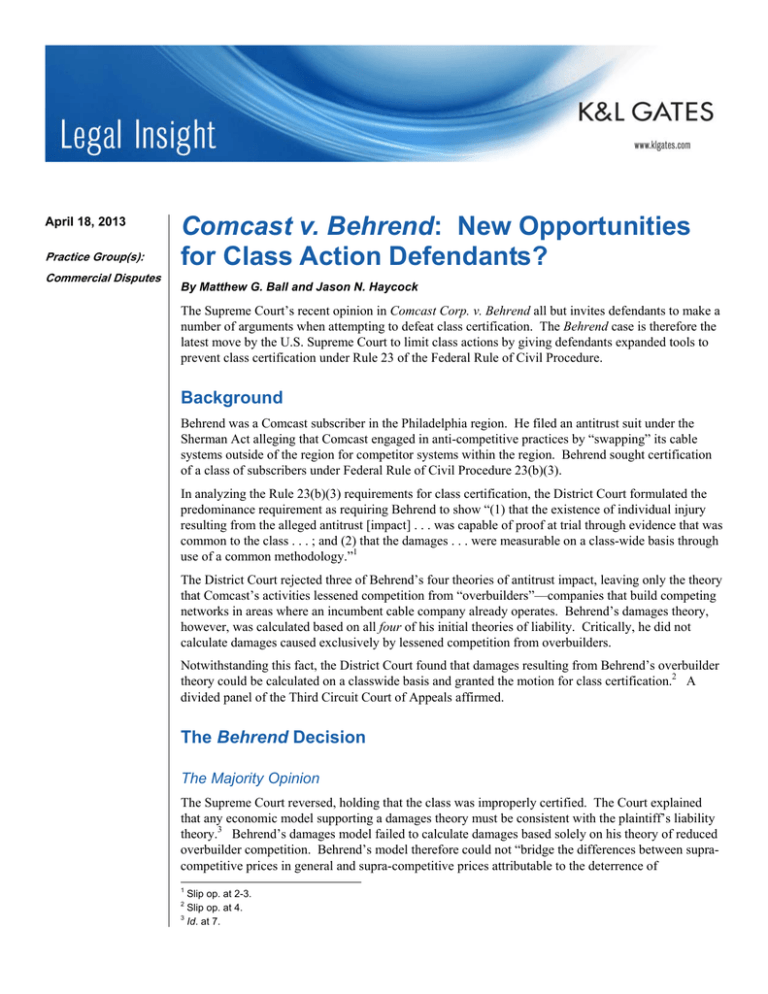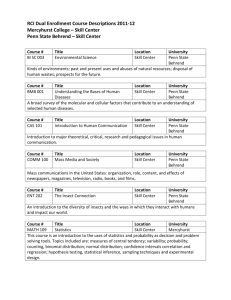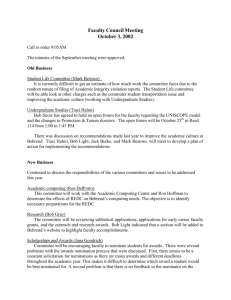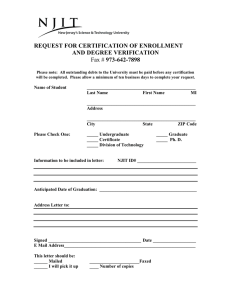
April 18, 2013
Practice Group(s):
Commercial Disputes
Comcast v. Behrend: New Opportunities
for Class Action Defendants?
By Matthew G. Ball and Jason N. Haycock
The Supreme Court’s recent opinion in Comcast Corp. v. Behrend all but invites defendants to make a
number of arguments when attempting to defeat class certification. The Behrend case is therefore the
latest move by the U.S. Supreme Court to limit class actions by giving defendants expanded tools to
prevent class certification under Rule 23 of the Federal Rule of Civil Procedure.
Background
Behrend was a Comcast subscriber in the Philadelphia region. He filed an antitrust suit under the
Sherman Act alleging that Comcast engaged in anti-competitive practices by “swapping” its cable
systems outside of the region for competitor systems within the region. Behrend sought certification
of a class of subscribers under Federal Rule of Civil Procedure 23(b)(3).
In analyzing the Rule 23(b)(3) requirements for class certification, the District Court formulated the
predominance requirement as requiring Behrend to show “(1) that the existence of individual injury
resulting from the alleged antitrust [impact] . . . was capable of proof at trial through evidence that was
common to the class . . . ; and (2) that the damages . . . were measurable on a class-wide basis through
use of a common methodology.”1
The District Court rejected three of Behrend’s four theories of antitrust impact, leaving only the theory
that Comcast’s activities lessened competition from “overbuilders”—companies that build competing
networks in areas where an incumbent cable company already operates. Behrend’s damages theory,
however, was calculated based on all four of his initial theories of liability. Critically, he did not
calculate damages caused exclusively by lessened competition from overbuilders.
Notwithstanding this fact, the District Court found that damages resulting from Behrend’s overbuilder
theory could be calculated on a classwide basis and granted the motion for class certification.2 A
divided panel of the Third Circuit Court of Appeals affirmed.
The Behrend Decision
The Majority Opinion
The Supreme Court reversed, holding that the class was improperly certified. The Court explained
that any economic model supporting a damages theory must be consistent with the plaintiff’s liability
theory.3 Behrend’s damages model failed to calculate damages based solely on his theory of reduced
overbuilder competition. Behrend’s model therefore could not “bridge the differences between supracompetitive prices in general and supra-competitive prices attributable to the deterrence of
1
Slip op. at 2-3.
Slip op. at 4.
3
Id. at 7.
2
Comcast v. Behrend: New Opportunities for Class Action
Defendants?
overbuilding, [and] Rule 23(b)(3) cannot authorize treating subscribers within the Philadelphia cluster
as members of a single class.”4
With respect to the District Court’s analysis of the predominance requirement, the Court explained, “it
is clear that, under the proper standard for evaluating certification, [Behrend’s] model falls far short of
establishing that damages are capable of measurement on a classwide basis. Without presenting
another methodology, respondents cannot show Rule 23(b)(3) predominance: Questions of individual
damage calculations will inevitably overwhelm questions common to the class.”5
The Dissent
The dissent expressed concern that the “decision should not be read to require, as a prerequisite to
certification, that damages attributable to a classwide injury be measureable on a classwide basis.”6
The dissent argued that the Court’s opinion “broke no new ground” and that it is “well nigh”
universally recognized that individual damages calculations do not preclude class certification.7 The
dissent concluded that the damages model was an issue of fact and the Court should have deferred to
the District Court’s finding that the model was capable of measuring damages on a classwide basis.8
What Behrend May Mean for Class Action Defendants
The Behrend opinion appears to represent the next step in the Supreme Court’s efforts to rein in class
action suits. More immediately, the opinion invites a number of arguments that defendants may try to
use to defeat class certification.
First, defendants facing a class action can argue that the predominance analysis requires a putative
class to affirmatively show damages measurable on a classwide basis as a prerequisite to certification.
There is ample language in support of this proposition, particularly the Court’s apparent endorsement
of the proposition that damages measurable on a classwide basis is the “proper standard for evaluating
certification[.]”9
Second, regardless of whether plaintiff bears an affirmative burden at the certification stage to show
that damages can be measured on a classwide basis, defendants may argue that a court should deny
class certification where it is impossible for a plaintiff to establish damages measurable on a classwide
basis at the certification stage.
Third, and despite the dissent’s view of the supposed black letter class certification law, defendants
can argue that a court should deny certification where individual damage calculations overwhelm
common issues.
Finally, the Court’s focus on the connection between the theory of liability and the theory of damages
suggests that defendants should argue, where appropriate, that a court should deny class certification
because plaintiff’s damages model does not tie to the theory of liability.
4
Id. at 10.
Id. at 7.
6
Dissent, at 3.
7
Id. at 3-4.
8
Id. at 9-10.
9
Slip op. at 7.
5
2
Comcast v. Behrend: New Opportunities for Class Action
Defendants?
Authors:
Matthew G. Ball
matthew.ball@klgates.com
+1.415.249.1014
Jason N. Haycock
jason.haycock@klgates.com
+1.415.882.8035
Anchorage Austin Beijing Berlin Boston Brisbane Brussels Charleston Charlotte Chicago Dallas Doha Dubai Fort Worth Frankfurt
Harrisburg Hong Kong Houston London Los Angeles Melbourne Miami Milan Moscow Newark New York Orange County Palo Alto Paris
Perth Pittsburgh Portland Raleigh Research Triangle Park San Diego San Francisco São Paulo Seattle Seoul Shanghai Singapore Spokane
Sydney Taipei Tokyo Warsaw Washington, D.C. Wilmington
K&L Gates practices out of 48 fully integrated offices located in the United States, Asia, Australia, Europe, the
Middle East and South America and represents leading global corporations, growth and middle-market companies,
capital markets participants and entrepreneurs in every major industry group as well as public sector entities,
educational institutions, philanthropic organizations and individuals. For more information about K&L Gates or its
locations, practices and registrations, visit www.klgates.com.
This publication is for informational purposes and does not contain or convey legal advice. The information herein should not be used or relied upon in
regard to any particular facts or circumstances without first consulting a lawyer.
©2013 K&L Gates LLP. All Rights Reserved.
3



